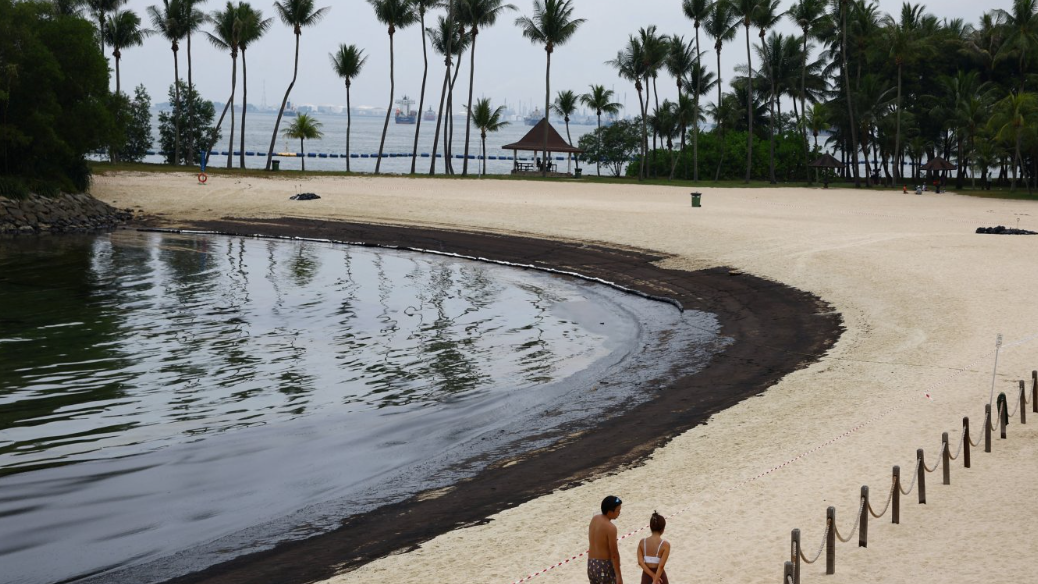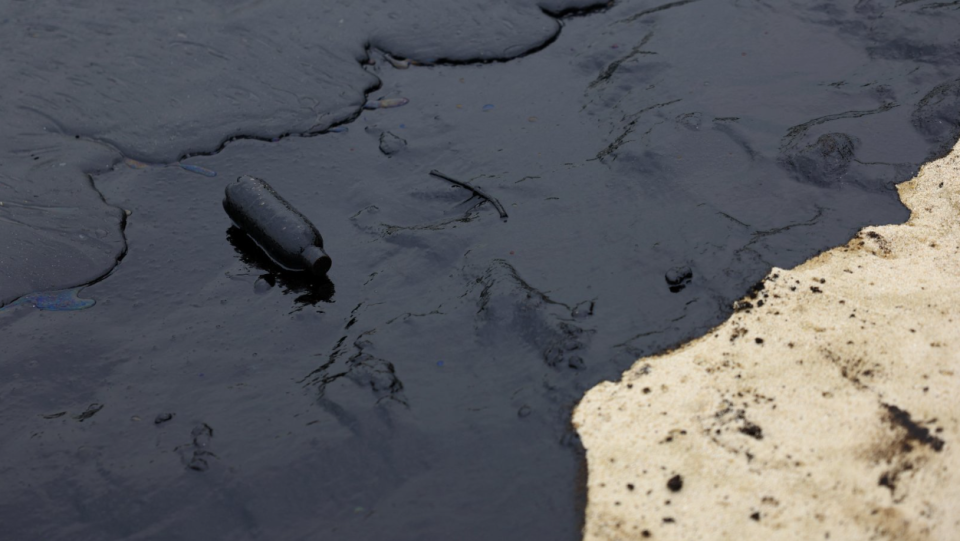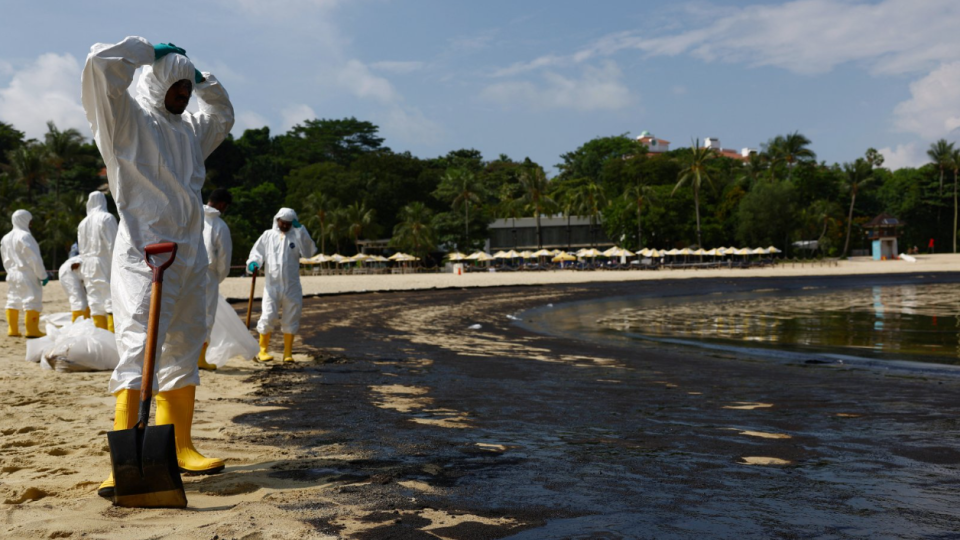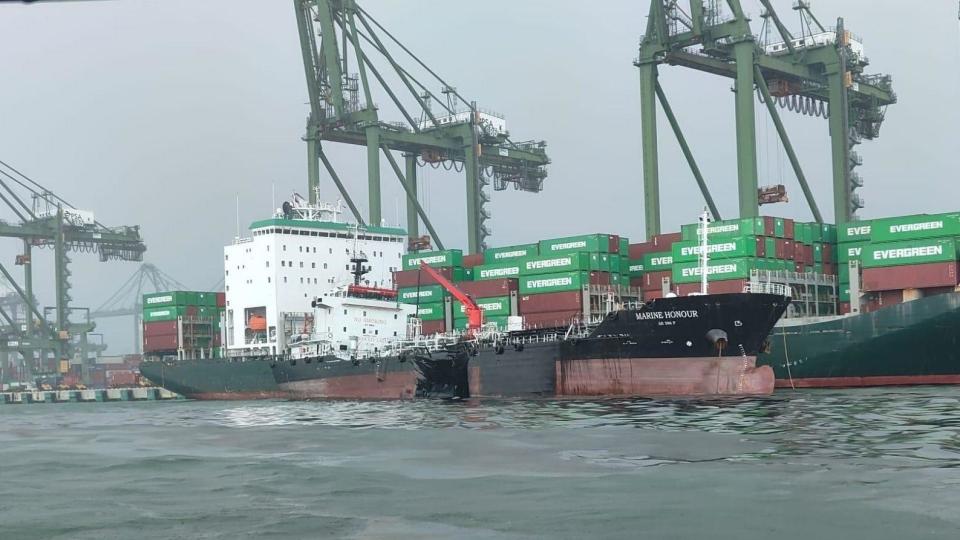Singapore races to clean up beaches after oil spill

Singapore authorities are scrambling to clean up a major oil spill that has blackened the city-state's southern coastline, days after a shipping accident.
On Friday, a Netherlands-flagged dredging boat crashed into a Singaporean fuel ship moored in the shipping straits off the nation.
Authorities said the dredger's loss of engine power led it to drift into the Singaporean vessel, puncturing its oil tank.
At least half the oil in its tank, about 400 tonnes, spilled out, with large quantities washed ashore.
"The allision caused a rupture of one of the Marine Honour's oil cargo tanks, and its contents of low-sulphur fuel oil were released to the sea," Singapore maritime and environment agencies said in a joint statement.
Visitors to some of the beach clubs on the popular resort island of Sentosa reported the water was still dark and oily and a smell lingered three days after the incident.
Swimming and other sea activities are prohibited for now in Sentosa, while several beaches across the country are closed until further notice.
There are concerns for wildlife - with reports from responders of sea snails and other creatures coated in oil.
However, initial biodiversity surveys have come back with no major damage reported.
“No significant impact to marine biodiversity had been observed, though oil was observed on the roots of some mangrove plants in the area," Dr Karenne Tun from the National Parks Board told the city's Straits Times newspaper.
However volunteers taking part in the clean up say it could still be too early to tell.
"It is a good sign that we did not see any wildlife in distress today, but we will have to monitor the situation. It could take a while before we see the true impacts from the oil spill," Kua Kay Yaw told the newspaper.


About 1,500 people have volunteered to help with the clean-up, the Singaporean government said.
But most of the work is being carried out by contracted workers - with several seen on the sands of Sentosa on Sunday, shovelling blackened heaps and picking through the oily surf.
On Monday morning, a staff member at a beach club metres away from the tourist beach said the water was "still black"
"The beach is open but you just can't go into the water, it's still not clean," Siobhan Chan told the BBC.

The government says it has deployed about 1.5km of oil-absorbent container booms near the beaches as well as off public park waterways at East Coast Park, West Coast Park and Labrador Nature Reserve.
The operation on the water to clean up the spill has also involved spraying dispersant chemicals to "break down the surface oil into droplets to enhance biodegration", the joint statement from authorities read.
But such treated oil suspended in water could still be "carried by tidal currents to coastlines".
Authorities said "oil sheen" had also been detected in the waters surrounding the protected Sisters' Islands Marine Park, which is closed to the public for coral reef and marine life protection.
Singapore is a major shipping and fuel bunkering hub - and hundreds of ships dot the city state's southern coastline.


